![]()
![]()
When a crayon or pencil is passed to a child for the first time, ever wondered how he or she learns to grip, hold and use it?
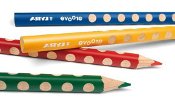
A common misconception people have about handwriting is that it comes naturally to children. The Necessary Skills to Develop Your Child’s Potential Seminar, organised by LYRA Asia on the 25 September 2010, helped to clear some misconceptions and highlighted on the fundamentals of handwriting in young children.
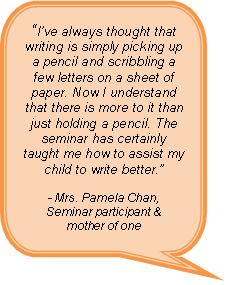
Participants had an interactive session with Alicia Lim and Noreen Boyle. Alicia is an Occupational Therapist, who specializes in writing with children at the National University Hospital of Singapore (NUH), and Noreen is a Specialist trained in the United Kingdom, who has been working in London schools and Nurseries for the past two decades. The duo helped to debunk some myths and offered insightful advice.
Children who accompanied their parents were also kept busy as they explored LYRA’s modeling clay products, facilitated by Wow Art Learning Studio trainers, and dabbled in some Speech and Drama, lead by teachers from The Mapping.
Besides parents, child care professionals also found the seminar enlightening. Ms. Pamela Soh, a childcare supervisor, expressed her appreciation for such seminars. She felt that the seminar was extremely helpful, as many of her students were still struggling to learn how to hold a pencil. She also found the speakers to be very professional, and had cleared many of her misconceptions about handwriting.
The Writing Process
The first speaker, Alicia, kick starts the seminar by getting the audience to use LYRA’s award-winning Groove coloured pencil. They had a feel of the Groove pencil as they used it to write. When participants compared its usage to the common pencil, it seems less effort was required due to the thicker dimension of LYRA’s pencil.
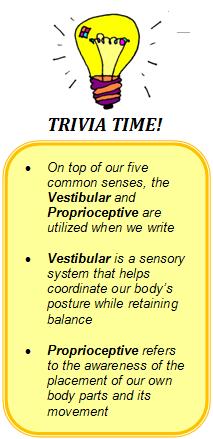
Alicia then asked the audience to write their names backwards but using their other lesser practiced hand. Knowing how the audience felt, she explained that this discomfort they were experiencing is similar to how children feel when they first start to write. Therefore, additional support or special tools are sometimes needed.
She also urged parents not to be quick to reprimand their children when they slouch or tuck their arm below their chin as they write. She clarified that such body postures does not entirely mean children are uninterested or lazy. On the country, it could be an indication that they are experiencing some difficulty with their writing position. Alicia also added that hurrying one’s child to write too early may result in unnecessary frustration and even illegible writing.
The second speaker, Noreen, recommended parents to let their little ones practice writing their ABCs, by starting with upper-case (capital) letters first, as they are mostly straightforward diagonal and horizontal lines, before advancing to lower-case (small) letters, which have more complicated curves.
Left or Right Hand?
Hand dominance was a hot topic that during the seminar. Mr. Manish Jain, a father of one, spoke to both speakers about his son, Sam, who is a left-hander. Mr. Jain had no qualms about his son writing with his left hand, but he felt that Sam was writing too slowly. The two speakers shared some useful tips to Mr. Jain to improve Sam’s writing speed at home, by setting a time limit and rewarding him when he completes his work on time.
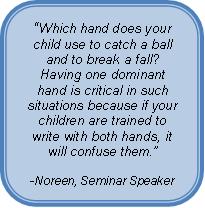
Another question raised was whether a child should be trained to write with both hands. This was promptly answered by Noreen, who explained how hand dominance is not solely for writing but is also an integral part of a person’s natural reflexes.
Her advice to parents, who want their left-handed children to be right-handed, is to allow their children to develop their hand dominance naturally, as forcing a change can cause unnecessary pressure on the children.
By Michelle Ang.
Ever wondered why your child grips the pencil differently?
How to get my son to write eligibly?
My child does not like to colour or write or draw. What should I do?
* * * * *
Like what you see here? Get parenting tips and stories straight to your inbox! Join our mailing list here.
Want to be heard 👂 and seen 👀 by over 100,000 parents in Singapore? We can help! Leave your contact here and we’ll be in touch.




































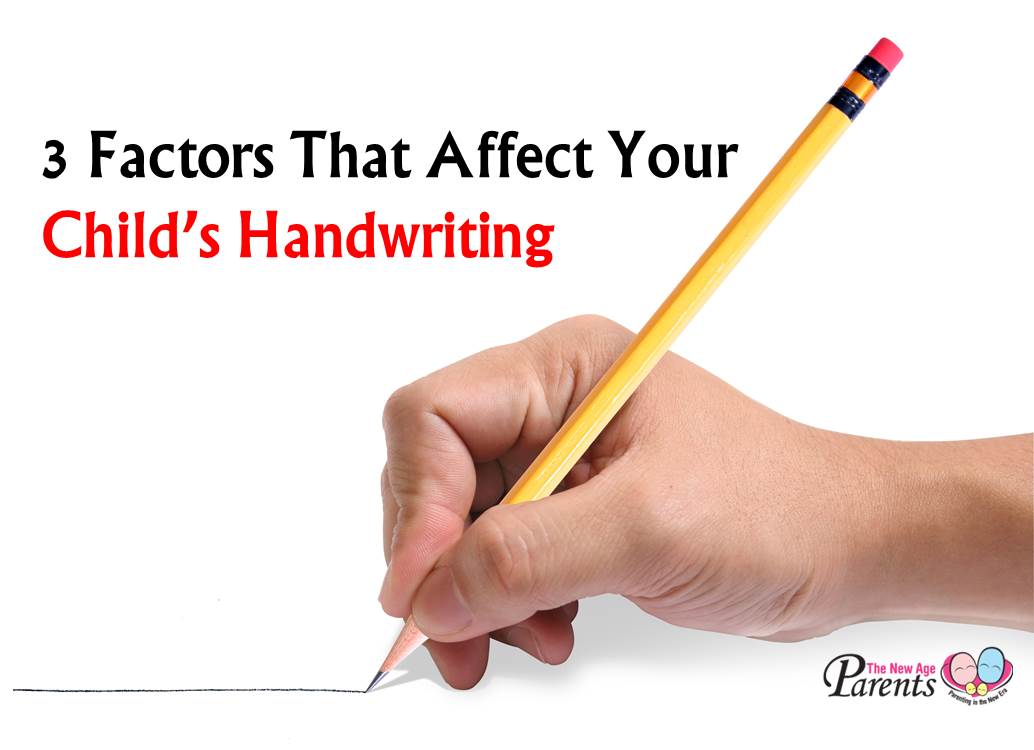
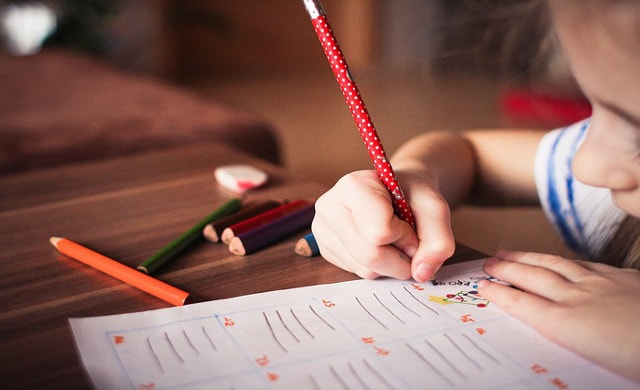
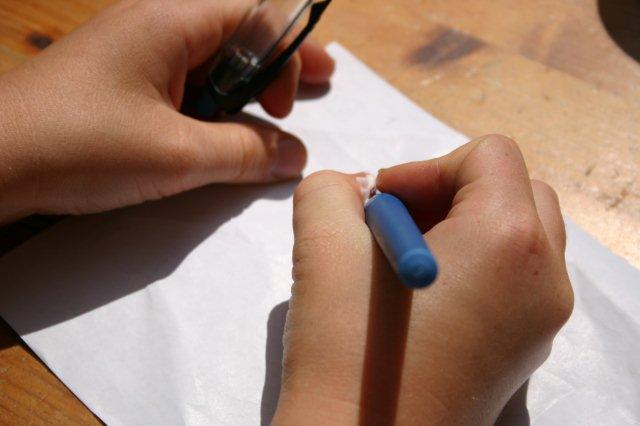
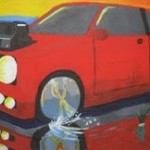
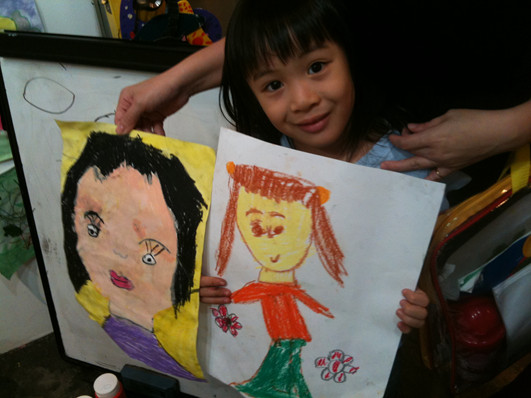
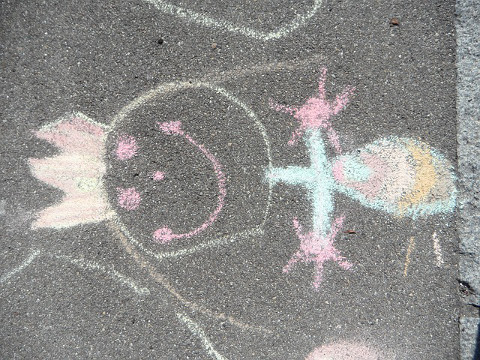
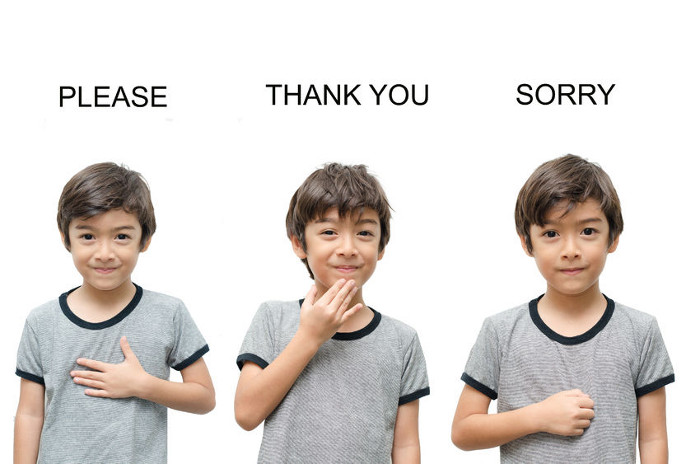

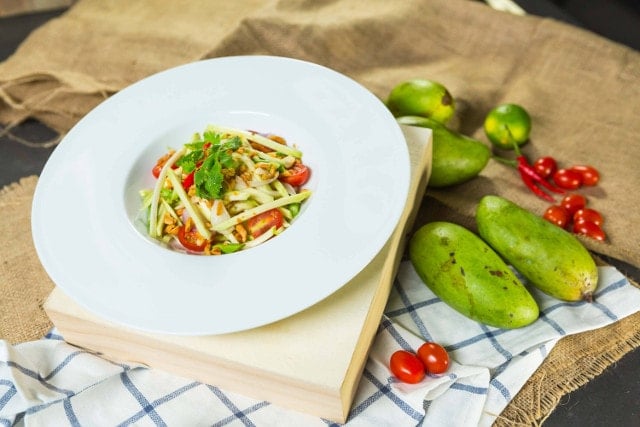
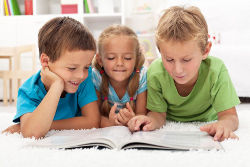












Leave a Comment: